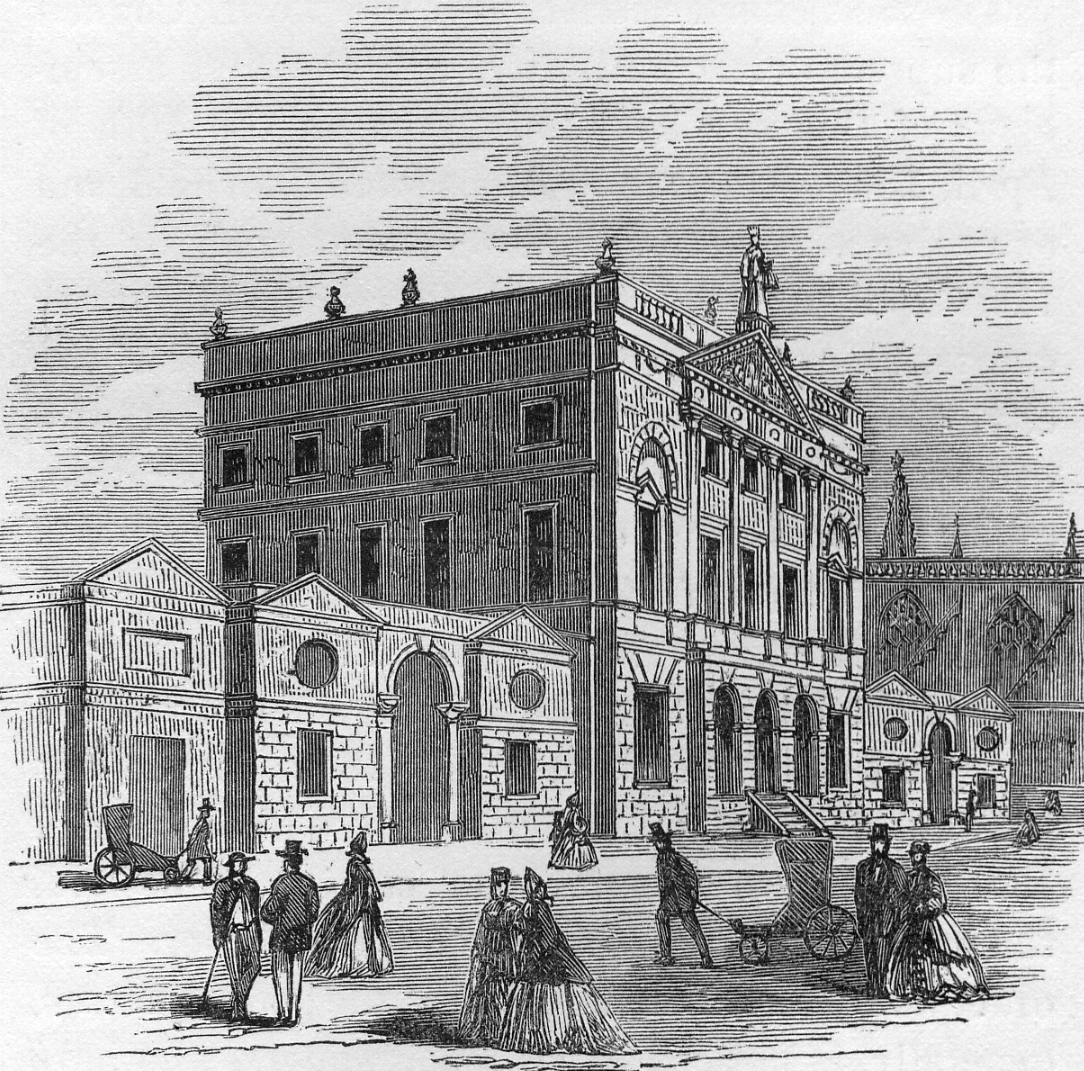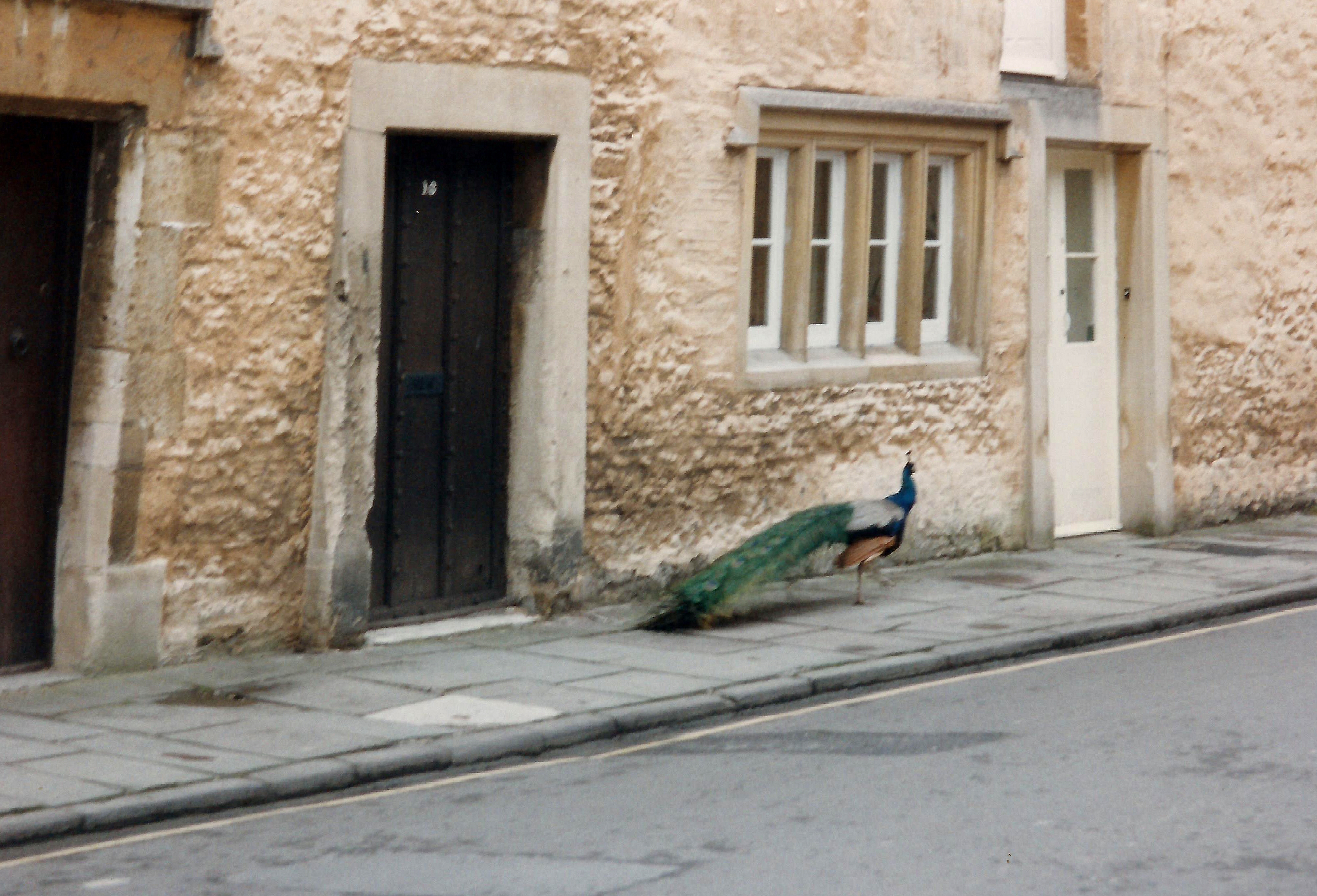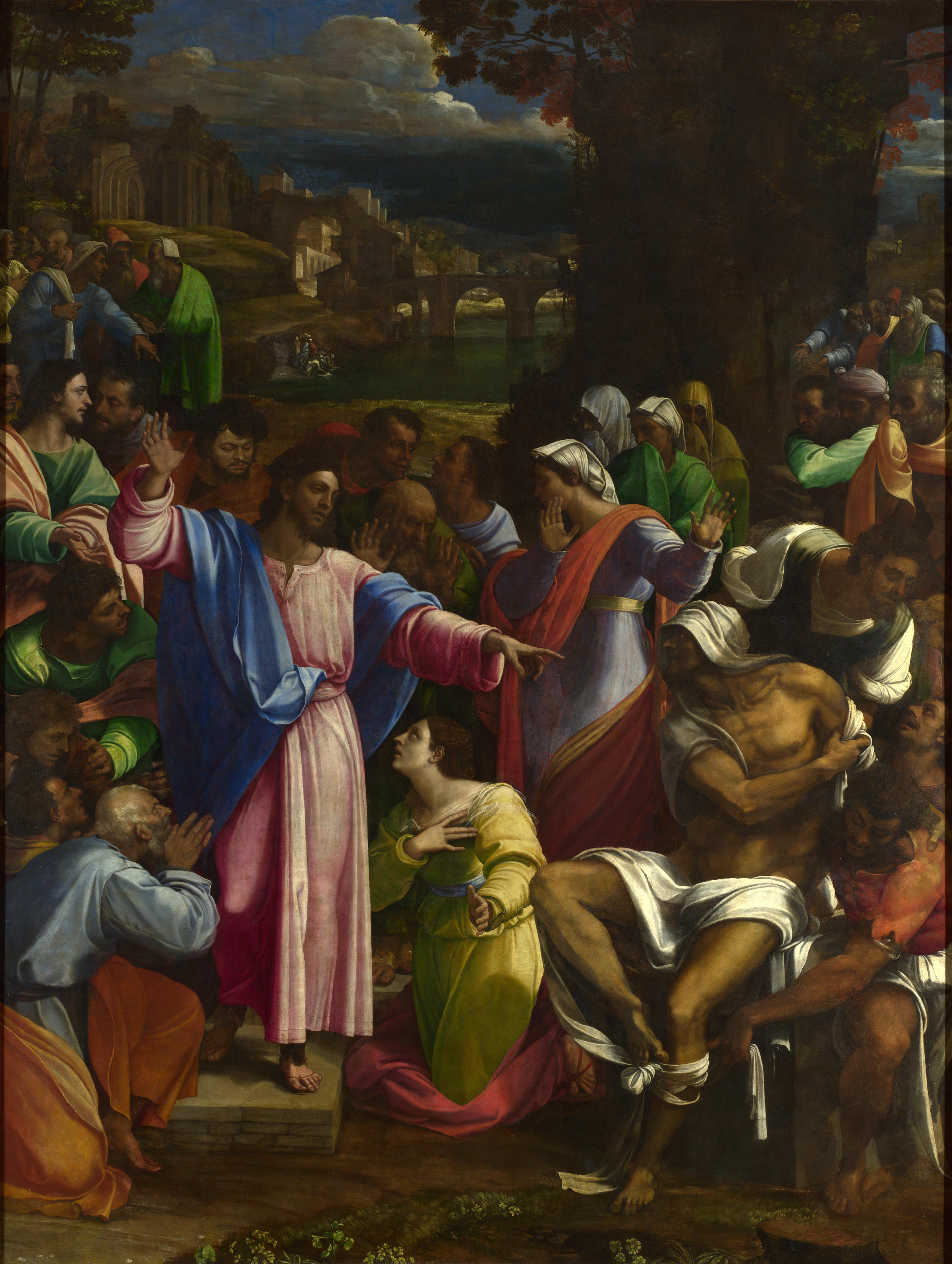|
Bath Academy Of Art
Bath School of Art and Design is an art college in Bath, England, now known separately as Bath School of Art and Bath School of Design. It forms part of the Bath Spa University whose main campus is located a few miles from the City at Newton Park, between Newton St Loe and Corston, in North Somerset, just outside the city of Bath. Bath School of Art is based at the new, award-winning Locksbrook Campus, on the river Avon, in the west of the city. Bath School of Design is spread across Locksbrook and Sion Hill Campuses. The present Heads of School are Dan Allen (School of Art) and Kerry Curtis (School of Design). History The school was founded as Bath School of Art in 1852 following The Great Exhibition of 1851. The Bath Directory for 1856 shows its location at Weymouth House (roughly the rear of the present Marks and Spencers store) and its Master as Anthony Carey Stannus, an Irish painter noted for marine scenes and who later helped establish a society which evolved into the Ro ... [...More Info...] [...Related Items...] OR: [Wikipedia] [Google] [Baidu] |
Bath Spa University
Bath Spa University is a public university in Bath, England, with its main campus at Newton Park, about west of the centre of the city. The university has other campuses in the city of Bath, and one at Corsham Court in Wiltshire. The institution gained full university status in August 2005, having been previously known as Bath College of Higher Education, and later Bath Spa University College. History The institution can trace its roots back to the foundation of the Bath School of Art in 1852, following the impact of The Great Exhibition of 1851. In 1946, Bath Teacher Training College was opened on the Newton Park campus, as part of the post-war initiatives to fill wartime teaching shortages. It was a women's college offering two year courses, under the Principal Mary Dawson. The present institution was formed in 1975 as Bath College of Higher Education by the merger of Bath Teacher Training College and Bath College of Domestic Science. In 1983 Bath Academy of Art also ... [...More Info...] [...Related Items...] OR: [Wikipedia] [Google] [Baidu] |
Bath Technical College
Bath College is a Further Education college in the centre of Bath, Somerset and in Westfield, Somerset, England. It was formed in April 2015 by the merger of City of Bath College and Norton Radstock College. The College also offers Higher Education courses and has its own Undergraduate building. History The college was formed in 1892 under the combined names of Bath City Science, Art, and Technical Schools. Its creation arose out of the need to encourage young people to take an interest in the sciences, and for them to be made aware of the technical innovations that were occurring at the end of the 19th century. In April 1896 these new Schools, including Bath Municipal Technical College, occupied the new north extension of the Guildhall, Bath. In 1910 Long Acre, Walcot was taken over as additional accommodation for technical training, mainly as a domestic science college. In 1914 the Old Jail at Twerton was converted and opened as Twerton Technical Institute. In 1927 a Ju ... [...More Info...] [...Related Items...] OR: [Wikipedia] [Google] [Baidu] |
Kenneth Armitage
William Kenneth Armitage (18 July 1916 – 22 January 2002) was a British sculptor known for his semi-abstract bronzes. Life Armitage was born in Leeds on July 18, 1916, the youngest of three children studied at the Leeds College of Art and the Slade School of Fine Art in London before joining the British Army (Royal Artillery) in 1939. In 1940 he married Joan Moore, another sculptor. They separated in the 1950s but never divorced. They had no children. After leaving the army, Armitage became head of the sculpture department at the Bath Academy of Art in 1946. In 1952, he held his first one-man show in London. In 1953, he became Great Britain's first university artist in residence, at the University of Leeds (to 1956). In 1958, he won best international sculpture under age 45 at the Venice Biennale. Armitage was made CBE in 1969 and was elected to the Royal Academy in 1994. In 2001, his sculpture "Both Arms" was erected along with a blue plaque in Millennium Square, Leeds, b ... [...More Info...] [...Related Items...] OR: [Wikipedia] [Google] [Baidu] |
Farrell & Grimshaw
Farrells is an architecture and urban design firm founded by British architect-planner Terry Farrell with offices in London, Manchester, Hong Kong, and Shanghai. The firm has won numerous awards for their characteristic mixed-use schemes, transit-oriented development, contextual urban placemaking, and cultural buildings. Origins Terry Farrell began his professional career in 1961 at the architecture department of the London County Council, where he met fellow staff architect Nicholas Grimshaw. The two became close friends, and in 1965 they founded the Farrell/Grimshaw Partnership, sharing their office for some time with Archigram. The firm built a reputation in private sector urban regeneration, renovating old houses and factories to accommodate modern uses. They were also part of a "new wave" of British firms experimenting with high-tech architecture. During this period Farrell/Grimshaw produced several pioneering works of high-tech, flexible buildings such as the 125 Park ... [...More Info...] [...Related Items...] OR: [Wikipedia] [Google] [Baidu] |
Herman Miller (manufacturer)
Herman Miller, officially MillerKnoll, Inc., is an American company that produces office furniture, equipment, and home furnishings, including the Aeron chair, Noguchi table, Marshmallow sofa, and the Eames Lounge Chair. Herman Miller is also credited with the 1968 invention of the office cubicle (originally known as the "Action Office") under then-director of research Robert Propst. History Herman Miller was founded in 1905 as the Star Furniture Co. Initially the company produced furniture, especially bedroom suites, in historic revival styles. In 1919, it was renamed the Michigan Star Furniture Co. under then-president Dirk Jan De Pree. De Pree and his father-in-law, Herman Miller, purchased 51% of the company stock in 1923 and renamed it the Herman Miller Furniture Company. The company reformed as Herman Miller, Inc. in 1960. With the coming of the Great Depression, the company faced bankruptcy until De Pree met Gilbert Rohde, an up-and-coming modernist designer. Rohd ... [...More Info...] [...Related Items...] OR: [Wikipedia] [Google] [Baidu] |
Herman Miller Factory, Locksbrook, Bath, 2011
Herman may refer to: People * Herman (name), list of people with this name * Saint Herman (other) * Peter Noone (born 1947), known by the mononym Herman Places in the United States * Herman, Arkansas * Herman, Michigan * Herman, Minnesota * Herman, Nebraska * Herman, Pennsylvania * Herman, Dodge County, Wisconsin * Herman, Shawano County, Wisconsin * Herman, Sheboygan County, Wisconsin Place in India * Herman (Village) Other uses * ''Herman'' (comic strip) * ''Herman'' (film), a 1990 Norwegian film * Herman the Bull, a bull used for genetic experiments in the controversial lactoferrin project of GenePharming, Netherlands * Herman the Clown ( fi, Pelle Hermanni), a Finnish TV clown from children's TV show performed by Veijo Pasanen * Herman's Hermits, a British pop combo * Herman cake (also called Hermann), a type of sourdough bread starter or Amish Friendship Bread starter * ''Herman'' (album) by 't Hof Van Commerce See also * Hermann (other) * Arma ... [...More Info...] [...Related Items...] OR: [Wikipedia] [Google] [Baidu] |
Bath College Of Domestic Science
Bath College of Domestic Science was a small college in Bath, Somerset, England. The teaching of domestic subjects in Bath started in 1892 at 19 Green Park with the founding of the Bath Technical Schools. The Technical Instruction Act of 1889 had given local authorities power to levy a rate to provide such education. In this building instruction also started in subjects including cabinet making, carpentry, joinery, masonry, mathematics and French. The prospectus for domestic subjects offered "Household and High-Class Cookery, Laundry Work, Dressmaking, Stitchery and Ornamental Needlework". In 1960 a local newspaper published a history of the college which stated: A photograph of the first group of students and another of Miss Lawrie were published in a commemorative brochure by Bath Spa University. In April 1896 the temporary homes of the various Technical Schools were united in the new north extension of the Guildhall. Miss Lawrie was succeeded as Headmistress by Miss A M Heyg ... [...More Info...] [...Related Items...] OR: [Wikipedia] [Google] [Baidu] |
Corsham
Corsham is a historic market town and civil parish in west Wiltshire, England. It is at the south-eastern edge of the Cotswolds, just off the A4 national route, southwest of Swindon, southeast of Bristol, northeast of Bath and southwest of Chippenham. Historically, Corsham was a centre for agriculture and later, the wool industry, and remains a focus for quarrying Bath Stone. It has several notable historic buildings; among them the stately home of Corsham Court. During the Second World War and the Cold War it became a major administrative and manufacturing centre for the Ministry of Defence, with numerous establishments both above ground and in disused quarry tunnels. The parish includes the villages of Gastard and Neston, which is at the gates of the Neston Park estate. History Corsham appears to derive its name from ''Cosa's hām'', "ham" being Old English for homestead, or village. The town is referred in the Domesday book as ''Cosseham''; the letter 'R' appears t ... [...More Info...] [...Related Items...] OR: [Wikipedia] [Google] [Baidu] |
Corsham Court
Corsham Court is an English country house in a park designed by Capability Brown. It is in the town of Corsham, 3 miles (5 km) west of Chippenham, Wiltshire, and is notable for its fine art collection, based on the nucleus of paintings inherited in 1757 by Paul Methuen from his uncle, Sir Paul Methuen, the diplomat. It is currently the home of the present Baron Methuen, James Methuen-Campbell, the eighth generation of the Methuens to live there. Early history Corsham was a royal manor in the days of the Saxon kings, reputed to have been a seat of Ethelred the Unready. After William the Conqueror, the manor continued to be passed down through the generations in the royal family. It often formed part of the dower of the Queens of England during the late 14th and early 15th centuries, becoming known as ''Corsham Reginae''. During the 16th century, the manor went to two of Henry VIII's wives, namely Catherine of Aragon until 1536, and Katherine Parr until 1548. During ... [...More Info...] [...Related Items...] OR: [Wikipedia] [Google] [Baidu] |
National Gallery
The National Gallery is an art museum in Trafalgar Square in the City of Westminster, in Central London, England. Founded in 1824, it houses a collection of over 2,300 paintings dating from the mid-13th century to 1900. The current Director of the National Gallery is Gabriele Finaldi. The National Gallery is an exempt charity, and a non-departmental public body of the Department for Digital, Culture, Media and Sport. Its collection belongs to the government on behalf of the British public, and entry to the main collection is free of charge. Unlike comparable museums in continental Europe, the National Gallery was not formed by nationalising an existing royal or princely art collection. It came into being when the British government bought 38 paintings from the heirs of John Julius Angerstein in 1824. After that initial purchase, the Gallery was shaped mainly by its early directors, especially Charles Lock Eastlake, and by private donations, which now account for two-thirds ... [...More Info...] [...Related Items...] OR: [Wikipedia] [Google] [Baidu] |
Bathampton
Bathampton () is a village and civil parish east of Bath, England on the south bank of the River Avon. The parish has a population of 1,603. The Kennet and Avon Canal passes through the village and a toll bridge links Bathampton to Batheaston on the north bank of the canal. History Bathampton Camp is a univallate Iron Age hill fort situated approximately east from the village. The site was excavated in 1904–05 and in 1952–54. Results found human and animal remains, pottery and flint flakes. The parish was part of the hundred of Hampton. The village used to be served by Bathampton railway station, but it was closed following the destructive Beeching cuts. Plasticine was manufactured in the village between 1900 and 1983 by a company founded by William Harbutt, who also lived in Bathampton. Governance The parish council has responsibility for some local issues, including setting an annual precept (local rate) to cover the council's operating costs and producing annua ... [...More Info...] [...Related Items...] OR: [Wikipedia] [Google] [Baidu] |









